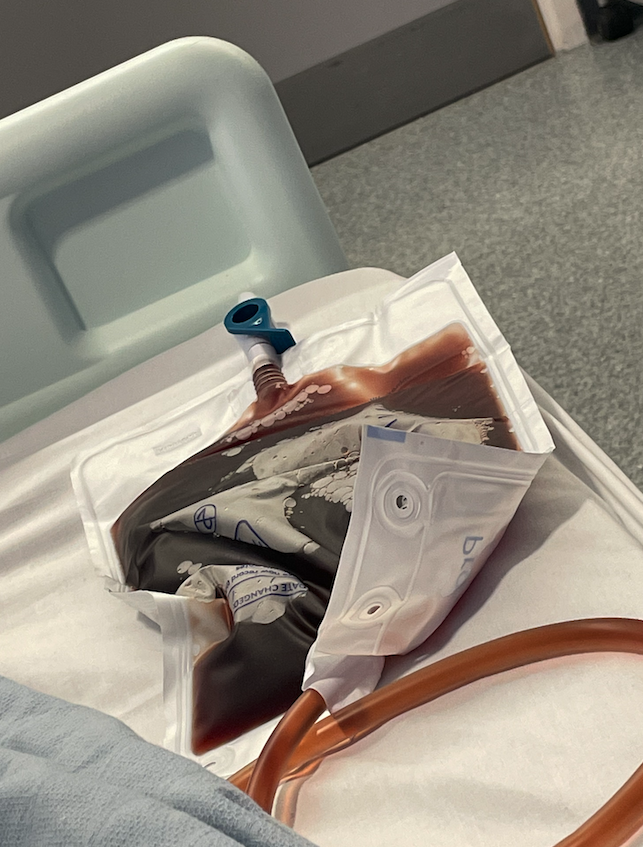My Kidney Transplant Biopsy and The Risk I Didn’t See Coming
Content note: This article contains a photo of Sabad's catheter bag in which you can see blood in her urine.
On Wednesday, April 19 2023, I had a kidney transplant biopsy. During a kidney transplant biopsy, the skin is cleaned and then numbed with an injection of a local anesthetic. There may be some slight discomfort. Once the skin is numb, a needle is inserted for the biopsy. This may be repeated 2 or 3 times.
A kidney biopsy is usually done in a hospital. An overnight stay may be needed to watch for any problems. You may be awake with only light sedation or asleep under general anesthesia. You could be lying face down with a pillow under your rib cage, but you will be lying on your back if the biopsy is done on a transplanted kidney.
Panic setting in
My renal doctor thought it would be the best course of action to study a piece of my transplant kidney to see the current state of the kidney as I am currently being treated for BK Virus and high protein in my urine, and I am experiencing minor signs of rejection, which are all being controlled by medication.
Before the procedure, I was calm and was very collected as this wasn't my first biopsy. Afterward, I was allowed to sit up in bed for two hours which was a change because I've always been told to lay flat for two hours and then sit up for another two before getting out of bed. When it was time to go to the bathroom, I knew I wasn't okay. I couldn't urinate as much as I wanted to, and all that came out was blood. That's when the panic set in. I tried to go to the bathroom for the second time after drinking four liters of fluids and that's when I saw blood clots. Each time I wiped, it was more blood clots. It was scary as I was in more discomfort and I was still not able to pass urine.
Getting admitted to the hospital
I went through many emotions that day. I cried for a good solid 5 minutes on the toilet, unable to pass urine, and just saw blood. I tried to focus my mind on what I could control at this moment in time, ask the doctor about the next steps, what I am looking at and what does the mean.
My doctor said that the next step would be to put on the fluid trip and catheter, as I had developed urinary retention and had built up fluid and I had no way of passing it without the catheter. I was then admitted for mentoring in the hospital renal ward and I was there for the next three days.
Finally getting to go home
Luckily, my urine was able to pass through the catheter line into the bag, but the amount of blood had me concerned. Still, I received some ciprofloxacillin (an antibiotic) and with each new urine bag being replaced, the color of my urine was turning from a dark rose red/black to a pink/red. Luckily, all of the bladder and kidney transplant ultrasound scans showed an all clear and I was allowed home that Friday evening. Lucky enough, on my 29th birthday which is a nice treat to be home after a traumatic experience.

I am so grateful to the doctors and nurses who helped me recover and got me home.

Join the conversation